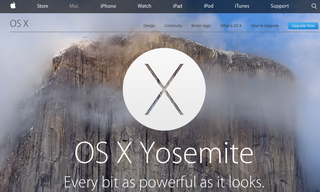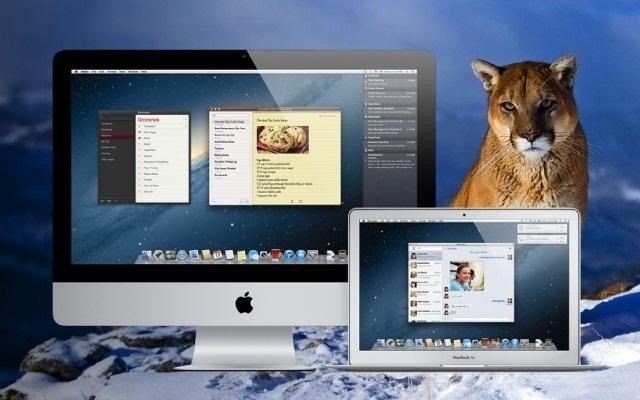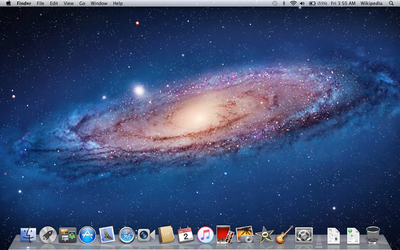Mountain Lion (OS X 10.8) is out today, available in the Mac App Store for just $20. Unfortunately, installing Mountain Lion requires that you already have a Mac running Snow Leopard (OS X 10.6) or Lion (OS X 10.7). If you're currently running a Leopard system, you're out of luck, and need to pay $29 to upgrade to Snow Leopard, and then an additional $20 to upgrade again to Mountain Lion.
System Requirements for Snow Leopard vs Leopard
(Interestingly, on a Snow Leopard Mac upgraded to Lion, the Print & Scan preference pane alerted me to updated drivers, instructing me to run Software Update to download the new software.). You can upgrade to Mountain Lion from Lion or directly from Snow Leopard. Mountain Lion can be downloaded from the Mac App Store for $19.99. To access the App Store you must have Snow Leopard 10.6.6 or later installed. You can purchase Snow Leopard by contacting Customer Service: Contacting Apple for support and service. Mac OS X Tiger was released as a PowerPC operating system, and the first Intel version was 10.4.4; Leopard was a Universal Binary from day one, streamlined and getting ready for Apple’s impending decision to leave the PowerPC platform altogether. Visually, Leopard introduced some new handy features in the Finder. That was the price of Lion last year - and 2009's Snow Leopard was $29. And while Apple hasn't officially committed to under-$30 for all upgrades, Mountain Lion is, like Snow Leopard, an.
- Snow Leopard (Mac OS X v10.6) only runs on Intel-based computers and not the older PowerPC chips.
- An upgrade from Leopard to Snow Leopard frees up about 7GB of hard disk space. This has more to do with removing redundant components like printer drivers (which are downloaded on demand in Snow Leopard) than removing code specific to PowerPC.
Speed and Performance in Snow Leopard
Apple has made operating system components faster with Snow Leopard. Performance improvements include
- Faster startup, shutdown, installation, Time Machine backup and connection establishment.
- Faster PDF and JPEG icon refreshes.
- Improved performance of Finder, which has been rewritten in 64-bit Cocoa
Refinements to the user interface in Mac OS X 10.6 (Snow Leopard)
There was no major overhaul of the existing Leopard interface when Apple introduced Snow Leopard. Minor UI refinements include:
- Stacks in Snow Leopard allow viewing a subfolder without launching Finder. Stacks have also been modified to include scroll-bars for folders with many files.
- Contextual menus which come out of Dock icons have more options and have a new look, with a semi-transparent charcoal background and white type.
- Exposé can display all windows for a single program by left clicking and holding its icon in the dock.
- Selection of columned text in PDF documents by analyzing the page layout.
- Prefixes for bytes are now used in strictly decimal meaning when describing disk space, such that an indicated file size of 1 MB corresponds to 1,000,000 bytes.
- There’s now a Put Back command in the Trash, just as in Windows’ Recycle Bin.
- You can page through a PDF document or watch a movie right on a file’s icon.
- When you click a folder icon on the Dock, you can scroll through the pop-up window of its contents.
- Buggy plug-ins (Flash and so on) no longer crash the Safari Web browser; you just get an empty rectangle where they would have appeared.
- Snow Leopard also has an impressive trove of tools for blind Mac users, including one that turns a Mac laptop’s trackpad into a touchable map of the screen; the Mac speaks each onscreen element as you touch it.
- When you rename an icon on an alphabetically sorted desktop, it visibly slides into its new alphabetic position so you can see where it went.
New Features in Snow Leopard vs OS X Leopard
- WiFi signal strength: AirPort in OS X Snow Leopard displays the signal strength for all available WiFi networks so you can choose the strongest possible connection.
- Sortable search results: Snow Leopard adds the ability to sort Spotlight search results by name, date modified, date created, size, type of file, or label.
- Annotations in Preview: New annotation tools in Preview allow users to annotate and markup PDF files, including comments, links, highlighting, strikethrough text, shapes, text, and arrows.
- Cisco VPN support: Snow Leopard has built-in support for Cisco VPN connectivity. This allows users to connect securely with corporate networks (if the network uses Cisco VPN) without needing any additional software.
- Automatic update for printer drivers: When connecting to a printer, Snow Leopard downloads the most current device driver for the printer from the Internet. The new OS X also periodically checks for updates to the printer driver via Software Update.
- Nearby printers: When printing Snow Leopard displays the printers that are detected nearby, enabling you to identify and configure the best available device for printing your document.
- HFS+ read in Boot Camp: When using Windows (via Boot Camp) users can now access (read-only) files on the 'Mac side' without rebooting.
Support for Microsoft Exchange
Mac OS X Snow Leopard includes out-of-the-box support for connecting to Microsoft Exchange 2007 servers for access through Mail, Address Book, and iCal. Neither Microsoft Windows nor older versions of Mac OS X included this feature.
64-bit addressing
Mac OS X Snow Leopard and most Mac OS 10.6 built-in applications have been rebuilt to leverage the 64-bit addressing space (excluding iTunes, Front Row, Grapher and DVD Player applications), since Apple has started shipping each Mac as a 64-bit system. Snow Leopard supports up to 16 terabytes of RAM.
Grand Central Dispatch in OS X v10.6
Grand Central Dispatch utilizes multiple processor cores for more efficient performance. Due to the technical difficulties involved in making multi-core-optimized applications, the majority of applications do not effectively utilize multiple processor cores. As a result, processing power often goes unused. Grand Central Dispatch includes APIs to help programmers efficiently use these cores for parallel programming.
OpenCL
Snow Leopard Dvd

Introduced in Snow Leopard, OpenCL (Open Computing Language) addresses the power of graphics processing units to leverage them in any application, and not just for graphics-intensive applications like 3D games. OpenCL automatically optimizes for the kind of graphics processor in the Mac, adjusting itself to the available processing power.
QuickTime X
In Mac OS X v10.6, Apple has redesigned the QuickTime user interface to resemble the existing QuickTime full-screen view, where the entire window plays only the video and all controls including the title bar fade in and out as needed.

QuickTime X supports HTTP live streaming. Thus, QuickTime X streams audio and video using any web server instead of a special streaming server, and it works reliably with common firewall and wireless router settings.
QuickTime X uses Mac OS X technologies such as Cocoa, Grand Central Dispatch, and 64-bit computing to deliver higher performance and enables QuickTime Player to launch up to 2.8x faster than QuickTime. QuickTime X also takes advantage of ColorSync to provide high-quality color reproduction.
There is a 'Send to YouTube' command built in when you play movies. Users can also record their screen activity as a movie.
CUPS
CUPS (the printing system in Mac OS X and Linux) has been updated to version 1.4 which provides improved driver, networking, and Kerberos support along with many performance improvements. CUPS 1.4 is also the first implementation of the Internet Printing Protocol version 2.1.
References
We have had time to get used to Mac OS X 10.5 Leopard. How does it compare to the legendary Mac OS X 10.4 Tiger?
Progress
It took a long time for Apple to get OS X right.
Version 10.0 was a stab in the dark, and 10.1 made things a bit better. OS X 10.2 Jaguar was the first proper edition, but it still had a long way to go. Mac OS X 10.3 Panther was not the best edition, but it was definitely better than the previous ones.
When Apple brought out 10.4 Tiger, it was amazing. Tiger became the longest running version of OS X, and I was wondering how Apple was going to top it. Then 10.5 Leopard came out with its fancy new features and power hungry visuals – but under the hood, in an everyday situation, how does it compare?
I have run both Tiger and Leopard. I even ran both on the same machine to give it a fair comparison: an Intel iMac Core Duo 1.83 GHz with 2 GB of RAM.
As you might expect, Tiger (version 10.4.11) flew along. Universal Binary apps screamed along, with the smaller ones opening in one or two bounces of the Dock icon. PowerPC apps took a little longer to open, but we are comparing operating systems here, and not system architecture.
Moving to Leopard

After wearing in the shoes of Tiger for a few months, I wiped the hard drive and did a fresh install of Leopard. Things were not as rosy. The whole machine felt slower – boot time was slower, and loading time was a little slower. My iMac may not be top of the range (getting on three years old), but it is way above the minimum specifications for Leopard (which are an 867 MHz G4 with 512 MB of RAM), so I was a little disappointed.
With any new operating system, you expect some bugs. That’s one reason for system updates. As I write this, we’re already on the fifth major update for Leopard, but at the time I was testing Leopard, Apple had just released 10.5.3. The first few updates made a huge difference to stability, speed, and system performance.
We have to bear in mind that we had a grand total of eleven updates for Tiger, and some these made massive differences, especially the earlier ones.
Comparing the two operating systems at launch, I would have to say that Tiger was more bug-ridden than Leopard and broke more apps than Leopard did. I only had one application, the hard drive cloning tool SuperDuper, that expressly said Not for Leopard. Tiger, on the other hand, broke most of my apps on its launch.

Mac OS X Tiger was released as a PowerPC operating system, and the first Intel version was 10.4.4; Leopard was a Universal Binary from day one, streamlined and getting ready for Apple’s impending decision to leave the PowerPC platform altogether.
Visually, Leopard introduced some new handy features in the Finder. Cover Flow is an obvious hit, as well as Stacks. While using my other machine, which has Tiger on it, I miss these features.
What Is Snow Leopard And Lion For Mac Catalina
For me, Tiger is still the best. While Leopard has a lot of handy features, if your machine isn’t way above minimum specs, you will notice a drop in performance.
Maybe this will be addressed in future system updates. Performance and speed have already been improved with the first five updates. Tiger still runs very well on an old G3. I am writing this on a Pismo PowerBook G3 (400 MHz G3, 1 GB RAM, 40 GB hard drive) – and it smokes.
If you have the machine to run Leopard well, I would suggest it – after cramming in as much as RAM as possible. However, if you’re running anything lower than a 1 GHz G4, stick with Tiger.
Both operating systems are fabulous. There isn’t much difference for the average user between the two except some fancy effects and a simpler way of connecting to other machines on your network.
Purchase Snow Leopard For Mac
I run both and love both of them. Being a lover of older Macs (G3s especially), Leopard is sometimes not an option, so Tiger has a special place in my heart. But for any machine capable of running it well, I’d install Leopard.
Follow Simon Royal on Twitter or send him an Email.
Like what you have read? Send Simon a donation via Tip Jar.
What Is Snow Leopard And Lion For Mac 10.6
keywords: #tiger #leopard #techspectrum #simonroyal
Mac Os X Snow Leopard Download
short link: http://goo.gl/rHf3wh
What Is Snow Leopard And Lion For Mac Pro
searchword: tigerorleopardbest
